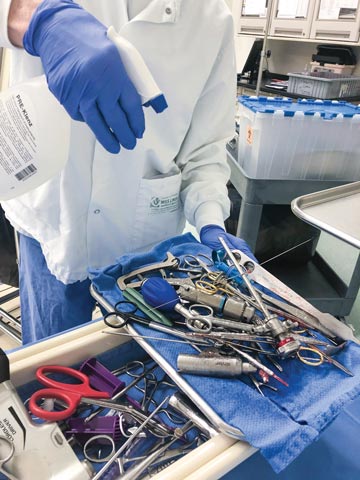Besides the occasional complaint about incomplete sets or late-arriving trays, how can an OR manager grade the sterile processing department’s performance? We’ve got you covered with 10 simple-to-measure benchmarks your SPD should hit.
1 Total cycle times
There’s no better way to measure the speed and productivity of SPD workflow than total cycle times. This metric tracks the time it takes a surgical tray to go from the first scan into the decontamination area, through the cleaning, inspection, assembly, packaging, sterilization and cooling process. While some of this time is equipment-dependent — such as a 32-minute washer cycle versus one that’s 1 hour and 15 minutes — this measurement also captures the speed of your manual cleaning, inspection and assembly process to give you a good sense of the true speed of flow through your department.
2Unprocessed trays at 7 a.m.
This indicator will cue you into potential volume versus staffing misalignments, as it measures the number of trays from the previous surgical day that are still sitting unprocessed at 7 a.m. While a high number of trays left over in the morning does not necessarily mean staffing is insufficient — especially if you have an overnight shift— it might signal you to take a closer look at your overall process.
3Missing instruments & incomplete trays
Measuring the ongoing completeness of your surgical inventory is another key indicator of reprocessing quality. Most instrument-tracking systems allow for simple reports for this metric on a daily, weekly or monthly basis to identify trends in the types of instruments going missing, and how often trays are being reprocessed without all the requested instrumentation. Some larger facilities can be missing thousands of instruments at any given time.
4Request & delivery times
This compares your expected delivery times for a requested instrument from an OR to the time it takes your staff to locate and deliver the item to the customer. If your SPD is located in the sterile core on the same floor as the OR, this might only be a 2-minute target. But if your SPD is 2 floors below in the basement, it could be closer to 5 or 7 minutes to allow for stairs or elevator transport. Missing this target could mean that your inventory storage is not well organized or that staff need more training on search functions in your tracking system.
5Customer satisfaction
While one of the more difficult metrics to measure, customer satisfaction from your users is a critical marker for overall success in your department. Emailing your OR team and surgeons a survey at various intervals. “On a scale of 1-10, how satisfied are you with the service you received from our sterile processing department?” can be enough to establish a baseline grade.
.svg?sfvrsn=be606e78_3)

.svg?sfvrsn=56b2f850_5)